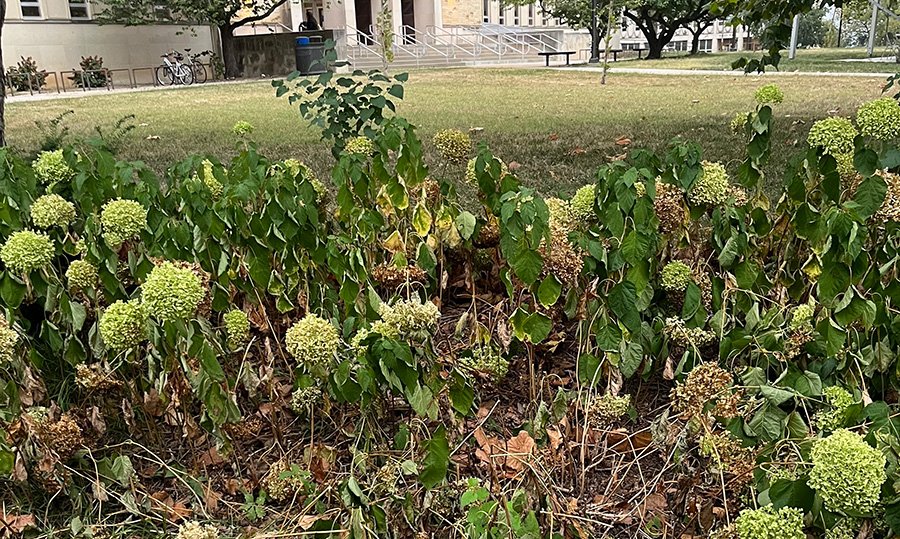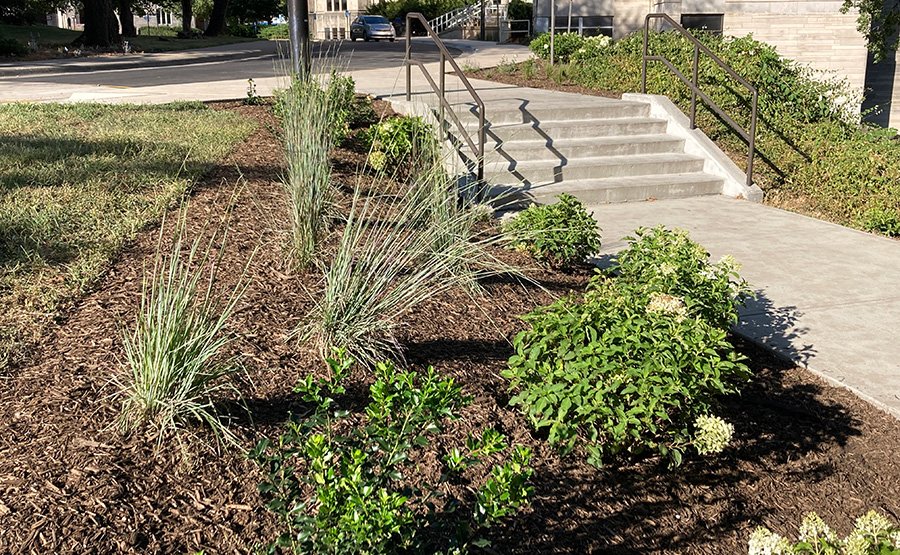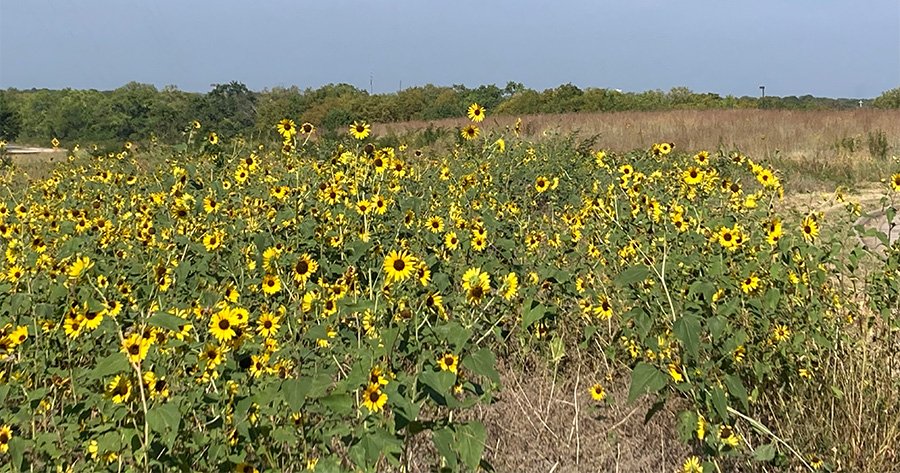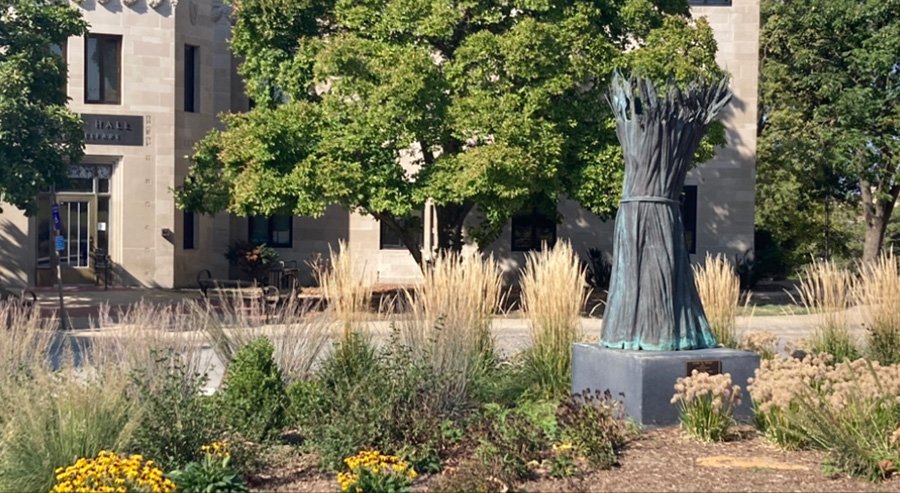Managing Landscapes in a New Weather Paradigm...
As of writing today Kansas City is 6.49” below our average YTD rainfall of 27.42”. Additionally, over the last 6 weeks our average temperature has been 3F over average. In the last 28 days we have had 12 days over 80, 7 days over 90, and 9 days over 100. One of those days the high was 112F. Most people don’t dig into climate numbers to this extent, and it is important to know this isn’t just my opinion. But rainfall this summer is not the focus of this writing. Rather I want to share my sense of the weather I work in and how it influences my grounds management. My landscape weather is consistently hotter and drier than it used to be. Despite being a cautious Groundskeeper something radical is happening. I believe I must drastically change the way I manage my campus if I am going to help it survive.

Plantings Must Durable and Resilient
Our most recent planting installation was a clear success. It marries two key buildings in the heart of campus and sets a design precedent for highlighting the many staircases we have on our campus. Because workflow on our campus can be chaotic, we planted during a stretch of hot weather. This timing required us to water 2 hours per day for the first week including weekend hours. Keeping up with watering is a challenge. Our current plant selection adds to our difficulties. The market (designers, nurseries, community) leans to plants poorly suited to our routinely harsh (and getting harsher) environments. Like most campuses we are leaning toward adaptive plants and appropriate water conservation practices. But this won’t be enough. We must strongly pursue an approach focused on true native plants and proven adapted plants capable of dealing with extended droughty periods. Our designs must embrace these concepts and be supported by leadership.
Note: USDA hardiness zones are currently based on tolerance to cold temps. I searched for a heat tolerance corollary and found American Horticultural Society Heat Zone Map. Are there others?

Natural Systems Must Be Complementary
Plants specifically, and ecosystems generally have always existed. While they have certainly changed drastically over time (evolved, adapted), they always maximize survival and balance. Our modern landscape does not seek this balance. My operation uses too many resources to perpetuate an unsustainable landscape or freeze the landscape in an untenable state. Landscapes change. But they inevitably move towards the climactic state based on the large influences of their particular location. (see Sustainability Tectonics)

Educating The Customer
The most effective effort a Groundskeeper can perform in pursuit of a sustainable landscape is to educate clientele why it makes sense. Too much of what we do in our landscapes is responsive to a population that is less than fully justified in the results they propose. The counterpart to this lack of capability is even when their objective is sound too often the means to the end is not. Groundskeepers are the point of the organization best prepared to lead the sustainable landscaping efforts. The Grounds Crew is the meeting point between organizational direction and implementation of horticultural reality. The measuring stick is resource allotment and consumption. Plainly speaking there is an inescapable relationship between the traditional landscape and resource consumption. The more intervention a landscape needs based on expectations, the more (scarce) resources it will consume. In some landscapes the function of the landscape is direct and broadly supported by the organization (golf, sports fields, botanic gardens, etc.). On campuses the result is less objective and more variable. Conveying the rationales and methods for pursuing organizational goals is essential to fostering support for a truly sustainable landscape.

No Time to Wait
There is no time to wait. I don’t say this to be alarmist or to push a radical eco-centric agenda. I say it because it is a simple truth. For 35 years in this industry, I have watched and participated while we nibble around the edges of sustainable landscaping. Yet we have not addressed the fundamental aspects of what sustainability is. Money and technology are not the answer. The answer to a sustainable landscape is simplicity synchronized with nature’s ecologic complexity (you don’t need to seek it. It just is). The basic guidance of “Right plant, right place” provides a template for the many simple rules that will guide us. Following timeless natural processes will unleash a landscape that emerges from the ecosystem rather than one hammered into the ecosystem. Sustainability is balancing what is taken with what is returned. It is cooperation rather than dominion. Our current paradigm is failing. It is time to pursue a new paradigm.



0 Comments
Recommended Comments
There are no comments to display.